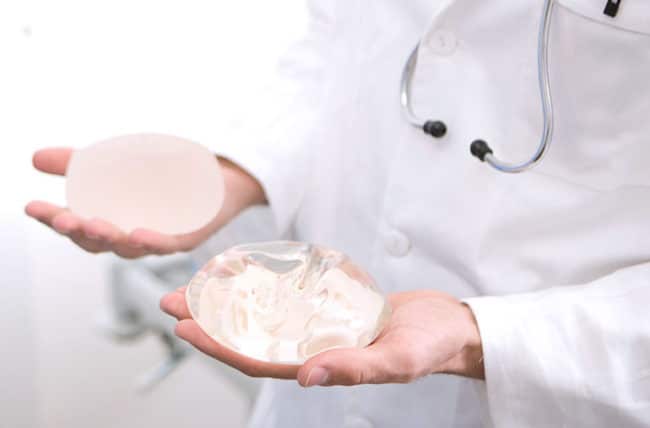Balancing Aesthetic Procedures and Athletic Performance: What You Should Know
Did you know that around 25% of athletes consider cosmetic procedures to enhance their performance and appearance? The trend of BBL (Brazilian Butt Lift) for athletes is on the rise, blending aesthetics with peak performance. Many athletes seek this procedure to improve their physique while maintaining optimal function. A well-balanced body can enhance confidence and help in competitive sports. However, it’s crucial to weigh the benefits of liposuction treatment against potential risks in a plastic surgery procedure for lean athletes. Recovery time and physical demands can impact training schedules. This post dives into how BBL affects athletic performance and aesthetics, helping you make informed choices. Discover the balance between looking good and performing at your best.
Key Takeaways
- Athletes considering a Brazilian Butt Lift (BBL) should weigh the aesthetic benefits against potential impacts on performance and training schedules.
- Popular cosmetic procedures can enhance an athlete’s confidence, but it’s essential to choose options that do not compromise physical abilities.
- Balance aesthetics and performance by setting clear goals and discussing them with a qualified professional who understands athletic needs.
- Training may need adjustments post-procedure; focus on specific workout strategies that prioritize both recovery and performance enhancement.
- Nutrition plays a crucial role in achieving athletic success; ensure a balanced diet to support recovery and maintain energy levels.
- Incorporate effective recovery techniques, such as stretching and hydration, to optimize performance while pursuing aesthetic goals.
Understanding BBL for Athletes
Definition
BBL stands for Brazilian Butt Lift. This cosmetic surgery enhances the shape and size of the buttocks. Surgeons transfer fat from other body areas to the buttocks. The goal is to create a more contoured and balanced figure through liposuction, aesthetic workouts, and athletic performance workouts. Many people seek this procedure for aesthetic reasons.
Athletes’ Considerations
Athletes often strive for both performance and appearance. They may consider BBL and liposuction to improve their body aesthetics without hurting their athletic performance workouts. A well-defined lower body can enhance an athlete’s overall look. This can lead to increased confidence, which is essential in competitive sports.
Athletes are usually in great shape. They want their bodies to reflect their hard work. However, they might feel self-conscious about certain areas, including their glutes, due to aesthetic workouts and athletic performance workouts using suction. A BBL can help address these concerns while maintaining athletic performance.
Benefits of BBL
BBL offers several benefits for athletes. One significant advantage is increased confidence. Feeling good about one’s appearance can lead to better performance on the field or court. Confidence helps athletes focus on their athletic performance workouts rather than worrying about how they look.
Body symmetry is another benefit. A balanced physique can improve an athlete’s overall form during athletic performance workouts. It may also reduce the risk of injuries by promoting better movement patterns.
A well-shaped backside can enhance athletic attire fit. This can be crucial during competitions where appearance matters. Athletes often wear fitted clothing that highlights their physique. A BBL can make these outfits look even better.
Risks and Considerations
Despite the benefits, athletes must consider potential risks. Surgery always involves recovery time. This may require a break from training or competition. Athletes should consult with medical professionals before deciding on this procedure.
The recovery process can vary based on individual health and surgical technique used. Some athletes may bounce back quickly, while others need more time. Proper planning around training schedules is essential.
Athletes should also think about how BBL affects their sport-specific movements. Changes in body weight distribution could impact performance if not managed correctly.
Popular Cosmetic Procedures for Athletes
Tummy Tuck
A tummy tuck is a surgical procedure that enhances abdominal muscle definition. This procedure removes excess skin and fat from the abdomen. It also tightens the underlying muscles. Many athletes choose this to improve their core strength. A well-defined abdomen can boost confidence in performance and appearance.
Athletes often undergo this procedure after significant weight loss or pregnancy. The results can lead to an improved athletic physique. With a flatter stomach, athletes may find it easier to perform certain exercises.
Liposuction
Liposuction is a popular option for removing stubborn fat from specific areas of the body. This method helps in sculpting the body, which is especially beneficial for athletes. It targets areas like the abdomen, thighs, and arms.
Many athletes use liposuction to achieve a more defined look. It can enhance their overall performance by improving mobility. Removing excess fat allows for better movement during sports activities.
This procedure does not replace diet and exercise but complements them. Athletes often combine liposuction with fitness routines for optimal results.
Labiaplasty
Labiaplasty is another cosmetic procedure gaining attention among female athletes. This surgery reduces the size of the labia for enhanced comfort during physical activities. Many women report discomfort when participating in sports due to the size of their labia.
By undergoing labiaplasty, female athletes can improve their performance without distraction. Comfort is crucial in competitive sports, and this procedure addresses that need directly.
Female athletes often seek out individual plastic surgeons who specialize in these types of surgeries. They want professionals who understand their unique needs and concerns.
Rhinoplasty
Rhinoplasty procedures are also common among athletes looking to improve their facial aesthetics. This surgery reshapes the nose for better appearance or function. Some athletes have suffered injuries that affect their breathing or appearance.
A successful rhinoplasty can enhance both looks and performance. Improved airflow through the nasal passages can benefit athletic performance significantly.
Breast Plastic Surgeries
Breast plastic surgeries include augmentation and reduction options for female athletes. These procedures allow women to adjust their breast size according to their comfort level during sports activities.
Athletes may opt for breast reduction if they experience discomfort while exercising. Conversely, some may choose augmentation to enhance their figure without sacrificing functionality.
Balancing Aesthetics and Performance
Importance of Balance
Athletes often face the challenge of balancing aesthetic goals with their performance needs. Many strive for a specific physique that enhances their appearance. However, this pursuit should not compromise their athletic abilities. Maintaining strength and endurance is crucial. An athlete’s body must perform under pressure, whether in training or competition.
Tailored Procedures
Cosmetic procedures can be customized to meet an athlete’s unique demands. For instance, a tummy tuck may reshape the midsection without affecting overall performance. Similarly, liposuction can target specific areas while preserving muscle mass. These procedures aim to enhance the appearance without causing damage to essential body functions.
Each athlete has different requirements based on their sport. A sprinter may need a leaner look, while a weightlifter might prioritize volume and muscle definition. Understanding these distinctions helps in selecting the right cosmetic options.
Psychological Impact
Improved aesthetics can significantly boost an athlete’s confidence. Feeling good about one’s appearance often translates into better performance. Athletes report increased motivation and focus when they are satisfied with their looks. This psychological aspect is vital in high-pressure situations.
The connection between confidence and performance is well-documented. When athletes feel good in their skin, they tend to push harder during competitions. Enhanced self-image can lead to improved results on the field or court.
Potential Issues
Despite the benefits, there are potential issues with cosmetic procedures. Athletes may experience discomfort during recovery periods. Procedures like implants or injections require downtime, which can interfere with training schedules. Some athletes worry about changes in volume that could affect their competitive edge.
Athletes should consult professionals experienced in working with sports figures. They must discuss concerns about how these changes might impact their performance and overall well-being.
Impact of Aesthetic Procedures on Training
Recovery Time
Recovery time from aesthetic plastic surgery, such as a BBL (Brazilian Butt Lift) or tummy tuck, can significantly affect an athlete’s training schedule. These procedures often require several weeks of downtime. For instance, typical recovery from a BBL may take around four to six weeks. During this period, athletes need to avoid intense workouts and heavy lifting. This downtime can disrupt their routine and impact overall performance.
Athletes must consider how these procedures fit into their training cycles. They often plan surgeries during off-seasons to minimize disruption. However, unexpected complications can arise, extending recovery periods. This can lead to a loss of conditioning and strength.
Training Regimen Changes
Post-procedure, athletes might need to adjust their training regimens. Initially, they should focus on light activities and gentle movements. Gradual reintroduction of workouts is crucial for safety. For example, a runner may switch from high-impact running to low-impact cycling or swimming during recovery.
As healing progresses, athletes can slowly return to their previous intensity levels. However, they must listen to their bodies and avoid pushing too hard too soon. In some cases, specific exercises may be restricted for months. Athletes should work closely with trainers and medical professionals to create a tailored plan.
Balance Between Rest and Activity
Finding the right balance between rest and activity is essential for optimizing recovery and performance. Adequate rest helps the body heal properly after surgery. Yet, too much inactivity can lead to muscle atrophy and decreased fitness levels.
Athletes should incorporate aesthetic workouts that promote recovery without overexertion. Activities like yoga or pilates can enhance flexibility while being gentle on the body. These workouts help maintain some level of fitness without risking injury.
Maintaining communication with coaches is vital during this phase. Coaches can help adjust training plans based on recovery progress. This ensures athletes remain engaged in their sport while allowing the body time to heal.
Workout Strategies for Enhanced Performance
Core Exercises
Core-strengthening exercises are essential after a tummy tuck. These workouts help rebuild the abdominal muscles that may have weakened. Focus on movements like planks and bridges. These exercises engage multiple muscle groups and improve stability.
Incorporating these exercises into your routine can enhance overall strength. They also support the spine, which is vital for athletes. Gradually increase the intensity as your body adapts. This will ensure you achieve optimal results without risking injury.
Personalized Training Plans
A personalized training plan is crucial after any cosmetic procedure. Each athlete has unique needs and recovery timelines. Adjusting workout routines to fit individual conditions helps maintain performance.
Consult with a fitness expert to create a tailored exercise routine. This plan should consider recent surgeries and current fitness levels. It may include low-impact activities like walking or cycling at first. As recovery progresses, gradually introduce more challenging workouts.
Gradual Intensity Increase
Reintroducing high-intensity workouts requires caution. Athletes should not rush back into their previous routines. Start with moderate exercises to gauge how your body responds post-surgery.
High-intensity interval training (HIIT) can be effective but should be approached carefully. Begin with shorter sessions and focus on form over speed. This helps prevent injuries that could set back progress.
Tight Clothing Benefits
Wearing tight clothing during workouts can offer benefits for athletes post-surgery. Compression garments support muscles and improve blood circulation. This can lead to better recovery and enhanced performance during workouts.
Choose clothing designed for athletic performance that fits snugly but comfortably. This helps in maintaining body temperature and reduces muscle fatigue during exercise.
Key Takeaways
- Incorporate core-strengthening exercises post-tummy tuck.
- Develop personalized training plans for optimal recovery.
- Gradually reintroduce high-intensity workouts.
- Use tight clothing for improved muscle support.
These strategies are essential for balancing performance and aesthetics in athletes. The right approach ensures safety while maximizing results from both cosmetic procedures and workout routines.
Nutrition Tips for Athletic Success
Balanced Diet
A healthy diet is crucial for athletes. It fuels workouts and aids recovery. Lean athletes need to focus on nutrient-dense foods. This includes fruits, vegetables, whole grains, and lean proteins. These foods provide the energy required for intense athletic activities.
Athletes should also pay attention to their macronutrient ratios. A balance of carbohydrates, proteins, and fats supports optimal performance. Carbohydrates offer quick energy. Proteins help in muscle repair and recovery. Healthy fats support overall health and hormone balance.
Hydration Importance
Hydration plays a key role in both performance and recovery. Athletes must drink enough water before, during, and after exercise. Dehydration can lead to fatigue and decreased performance. It can also slow down recovery.
In addition to water, electrolyte drinks can be beneficial. They replenish lost minerals during intense workouts. Proper hydration helps maintain a toned stomach by reducing bloating caused by dehydration.
Nutrient-Rich Foods
Certain foods enhance healing and energy levels. Incorporating these into the diet can boost athletic performance. Here are some examples:
- Lean meats like chicken or turkey provide essential protein.
- Fish such as salmon offers omega-3 fatty acids that reduce inflammation.
- Leafy greens like spinach are rich in vitamins and minerals.
- Nuts and seeds supply healthy fats and protein.
- Whole grains like quinoa or brown rice provide sustained energy.
Including these nutrient-rich foods helps manage fat cells effectively. This is important for athletes aiming for weight loss while maintaining strength.
Timing of Meals
Meal timing is also important for athletes. Eating before workouts provides necessary fuel. Consuming a meal with carbohydrates and protein post-workout aids in recovery. This helps replace glycogen stores depleted during exercise.
Athletes should aim to eat within 30 minutes after training. This optimizes recovery and prepares the body for future workouts.
Supplements Consideration
e athletes consider supplements to enhance their diet. Protein powders can help meet daily protein needs. Creatine may support strength gains, while branched-chain amino acids (BCAAs) assist in muscle recovery.
However, it’s essential to consult with a healthcare professional before starting any supplements. Not all athletes need them, and whole foods should be prioritized first.
Effective Recovery Techniques for Athletes
Rest and Care
Athletes often face the challenge of balancing performance with aesthetics. After undergoing procedures like surgical techniques for body contouring, rest is crucial. Many patients need to allow their bodies time to heal. Proper care during recovery can reduce complications. Pain management is essential in this stage. Following a cosmetic procedure, athletes should avoid strenuous activities for several weeks. This rest period helps repair tissues and prevents injuries.
Gentle Exercises
Physical therapy plays a vital role in recovery. Gentle exercises can help maintain mobility without straining the body. Activities like yoga are beneficial for many patients. Yoga promotes flexibility and strength while being low-impact. It also aids in reducing back pain that some athletes may experience post-surgery. These exercises support the healing process by increasing blood flow to affected areas.
Mental Health Practices
Mental health is just as important as physical health during recovery. Practices such as meditation can significantly benefit an athlete’s mindset. Stress can hinder healing, so finding ways to relax is key. Meditation helps athletes focus on their breathing and calm their minds. This practice can lead to better pain management and improved well-being.
Nutrition’s Role
Nutrition remains critical in recovery as well. A balanced diet supports overall health and healing. Nutrients like protein assist in tissue repair, while vitamins boost the immune system. Hydration also plays a significant role in maintaining energy levels and aiding recovery.
Follow-Up Care
Regular follow-up appointments are necessary after any treatment or surgery. These visits allow healthcare providers to monitor progress and address any concerns. Patients should communicate openly about their experiences and any pain they feel during recovery.
Achieving Both Aesthetic and Performance Goals
Setting Realistic Goals
Athletes should set realistic goals that combine both aesthetics and performance. This means understanding personal limits while aiming for improvement. For example, a sprinter might want to enhance their speed while also achieving a toned physique. Balancing these two aspects requires careful planning.
Goals must align with individual performance benchmarks. Athletes should evaluate their current abilities before setting new targets. This assessment helps in creating a clear path forward. It also ensures that the focus remains on enhancing physical capabilities without sacrificing appearance.
Consulting Professionals
Consulting with medical professionals is essential for athletes considering body modifications. These experts can tailor procedures to meet specific athletic needs. For instance, a plastic surgeon experienced in sports medicine can provide guidance on how a procedure may affect performance.
Medical professionals can help athletes understand potential risks involved in any aesthetic changes. They can also advise on recovery times and how these might impact training schedules. This information is vital for making informed decisions about body modifications.

Ongoing Self-Assessment
Ongoing self-assessment plays a crucial role in achieving balanced outcomes. Athletes need to regularly evaluate their progress towards both performance and aesthetic goals. This process allows them to identify what works and what doesn’t.
Self-assessment can involve tracking physical measurements, strength levels, and overall fitness. Adjustments may be necessary based on these evaluations. If an athlete notices they are losing strength while focusing on aesthetics, they must consider changing their approach.
Athletes should remain flexible in their training regimens. Adapting workouts can help maintain a balance between looking good and performing well. This flexibility encourages continuous improvement.
Focus on Form
Maintaining proper form during workouts is key to achieving both aesthetic and performance results. Good form prevents injuries and promotes effective training sessions. Athletes must prioritize technique over the amount of weight lifted or the intensity of workouts.
As athletes develop their skills, they should pay attention to how their bodies respond to different exercises. This awareness can lead to better adjustments in training routines and dietary choices. Proper nutrition complements exercise efforts, helping achieve desired results.
Summary
Balancing performance and aesthetics is crucial for athletes. You’ve learned how BBL and other cosmetic procedures can enhance your look without compromising your game. It’s all about finding that sweet spot between what you want to achieve aesthetically and maintaining peak performance.
You have the tools to reach your goals. Prioritize your training, nutrition, and recovery while considering cosmetic enhancements. Stay informed and make choices that align with your athletic aspirations. Remember, it’s possible to look good and perform even better. Take charge of your journey today!
Frequently Asked Questions
What is BBL and how does it relate to athletes?
BBL, or Brazilian Butt Lift, enhances the buttocks using fat transfer. For athletes, it can improve aesthetics without compromising performance.
Can athletes undergo cosmetic procedures like BBL?
Yes, many athletes opt for cosmetic procedures. However, they should consult with professionals to ensure safety and minimal impact on their training.
How does BBL affect athletic performance?
BBL can temporarily affect mobility and strength during recovery. Proper planning ensures athletes maintain performance levels post-procedure.
Are there specific workout strategies for athletes considering BBL?
Yes, focus on low-impact exercises during recovery. Gradually reintroduce high-intensity workouts as healing progresses to prevent injury.
What nutrition tips support recovery after a BBL?
Prioritize protein intake for muscle repair and hydration for optimal recovery. Balanced meals aid in faster healing and overall athletic performance.
How can athletes balance aesthetics and performance goals?
Set clear objectives for both aesthetics and performance. Regularly assess progress and adjust training and nutrition plans accordingly.
What recovery techniques are best for athletes post-BBL?
Rest is crucial. Incorporate gentle stretching, adequate sleep, and hydration to enhance recovery while maintaining fitness levels.






